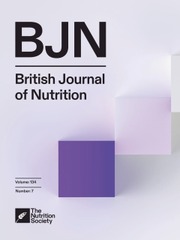No CrossRef data available.
Article contents
Effect of vitamin D supplementation for major adverse cardiovascular events: a meta-analysis based on randomised controlled trials
Published online by Cambridge University Press: 21 July 2025
Abstract
This meta-analysis assesses the relationship between vitamin D supplementation and incidence of major adverse cardiovascular events (MACE). PubMed, Web of science, Ovid, Cochrane Library and Clinical Trials were used to systematically search from their inception until July 2024. Hazard ratios (HR) and 95 % CI were employed to assess the association between vitamin D supplementation and MACE. This analysis included five randomised controlled trials (RCT). Pooled results showed no significant difference in the incidence of MACE (HR: 0·96; P = 0·77) and expanded MACE (HR: 0·96; P = 0·77) between the vitamin D intervention group and the control group. Further, the vitamin D intervention group had a lower incidence of myocardial infarction (MI), but the difference was not statistically significant (HR: 0·88, 95 % CI: 0·77, 1·01; P = 0·061); nevertheless, vitamin D supplementation had no effect on the reduced incidence of stroke (P = 0·675) or cardiovascular death (P = 0·422). Among males (P = 0·109) and females (P = 0·468), vitamin D supplementation had no effect on the reduced incidence of MACE. For participants with a BMI < 25 kg/m2, the difference was not statistically significant (P = 0·782); notably, the vitamin D intervention group had a lower incidence of MACE for those with BMI ≥ 25 kg/m2 (HR: 0·91, 95 % CI: 0·83, 1·00; P = 0·055). Vitamin D supplementation did not significantly contribute to the risk reduction of MACE, stroke and cardiovascular death in the general population, but may be helpful for MI. Notably, the effect of vitamin D supplementation for MACE was influenced by BMI. Overweight/obese people should be advised to take vitamin D to reduce the incidence of MACE.
Information
- Type
- Systematic Review and Meta-Analysis
- Information
- Copyright
- © The Author(s), 2025. Published by Cambridge University Press on behalf of the Nutrition Society


